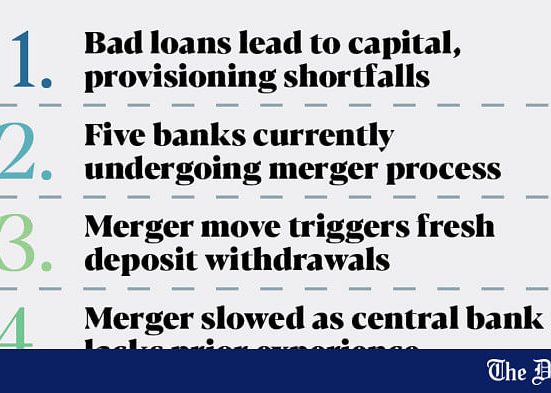With increasing trading volumes and volatility, keeping up with crypto training is nearly impossible … More
The crypto universe has reached truly planetary scale. Total market capitalization now hovers around $3.4 trillion, spread across 17,581 actively-tracked coins. Crypto never sleeps, as it trades 24/7, so every hour, those assets move through time zones, generating an endless feed of prices, blockchain metrics and gossip. Social-intelligence platform LunarCrush says it collects more than two million crypto-related posts every single day, ingesting tweets, Reddit threads, YouTube comments and even Discord chat logs, before ranking each for sentiment and engagement.
For portfolio managers, that torrent is both opportunity and overload. A mid-level analyst in New York costs roughly $99,600 a year to sift the noise, while Anthropic charges just $3 for a million input tokens on its 200 k-context Claude 3 Sonnet model. The math is clear: 2025 is the first year it is cheaper, and faster, to let AI watch the market full-time and escalate only what matters.
Can AI Help with Crypto Management?
Crypto’s risk profile dwarfs that of traditional assets. A 2023 academic study comparing daily returns found that 80% of S&P 500 moves sit inside a ±1% band, whereas just 40% of bitcoin’s do; in other words, BTC’s intraday swings are roughly five times larger than blue-chip equities. Add 24/7 trading and thousands of micro-cap tokens, and the surveillance burden mushrooms exponentially.
Meanwhile, pressure on professional fees is rising. Institutional investors now demand minute-level oversight, but balk at paying for night-shift quants. Plugging Claude into a data pipeline costs pennies per hour and delivers machine-speed pattern recognition with a legally auditable paper-trail. The result is a structurally cheaper and demonstrably calmer portfolio operation.
What Is Claude AI?
Anthropic’s Claude 3 family launched in March 2024 and has since moved to Sonnet 3.7 and beta 3.5 releases, each keeping the 200 k-token context window, but adding function-calling, deterministic JSON output and enterprise “Trust Center” options. At $3/MTok input and $15/MTok output, Sonnet offers the best cost-to-comprehension ratio in the model line-up.
Two design characteristics of Claude matter for regulated finance. First, constitutional AI: teams can embed hard rules (“never suggest deterministic price targets,” “flag any address on an OFAC list”) that Claude must follow. Second, Anthropic provides full audit logs, satisfying SOC 2, MAS TRM and ESMA retention requirements without duct-taped loggers.
Key Data Feeds Claude Can Ingest
Claude is modality-agnostic: if you can get the data in text or a machine-readable format like JSON, you can embed it. Typical crypto desks stream four pillars into Claude:
- Exchange Open, High, Low, Close and Volume (OHLCV) – minute-bar prices from Binance or Coinbase drive technical setups and slippage models.
- On-chain metrics – Glassnode’s Net Unrealised Profit/Loss (NUPL) tells you whether the crowd is sitting on windfall gains or nursing paper cuts.
- Newswire and research – CoinDesk headlines, Reuters Crypto flashes and sell-side notes flag regulatory catalysts.
- Social sentiment – the LunarCrush fire-hose classifies those two-million-plus posts into velocity, polarity and engagement buckets.
A cron script bundles each feed into hourly JSON objects and posts them to Claude’s /v1/messages endpoint. Latency? Typically under two seconds per 100k tokens.
How Claude AI Can Help Analyze Crypto Market Data
Summarize Market News
Sample prompt: You are a crypto news analyst. Collapse the 25 headlines below into a three-sentence risk brief ranked by market impact. Output JSON with fields {riskLevel, who, what, why}.
A well-structured prompt turns 25 raw headlines into a three-sentence brief ordered by potential price impact and frees up analysts to sanity-check rather than skim headlines. In addition, as the output arrives in strict JSON, dashboard code can colour-code “high-impact” stories red without human touch.
Track Technical Indicators And Prices
Give Claude the past 30 days of bitcoin price data and ask it to calculate some popular technical indicators such as the 14-day Relative Strength Index (RSI), the 20-day simple moving average, or Bollinger Bands, which help identify price volatility. The model can handle these calculations quickly, returning clean outputs that can be directly plugged into dashboards or trade alerts.
Beyond the basics, with good prompting and input data, Claude can calculate z-scores for funding rates, analyze open interest trends or identify volatility skews in the options market using export files from trading platforms. It’s a versatile way to structure raw market data into insight.
Spot Emerging Trends
The real value of Claude emerges when it’s used to connect social sentiment with on‑chain activity. Take Dogwifhat (WIF), the Solana‑based memecoin that ripped ≈40 % in a single session after Coinbase’s listings chief teased an imminent roadmap addition—a tweet that sent #WIF mentions on X soaring and LunarCrush social‑volume scores up triple‑digits. Claude, ingesting that LunarCrush feed alongside Glassnode’s spike in large‑holder transfers, flagged the anomaly, drafted a concise risk brief and suggested checking Solana‑perp funding‑rate and options open‑interest screens to confirm real capital was piling in. When Coinbase’s formal listing post dropped and WIF printed $4.21, desks running the Claude pipeline were already long while most traders were still digesting the news.
Automating Portfolio Rebalancing And Trade Alerts
Claude doesn’t execute trades or hold private keys, but it plays a critical role in monitoring portfolio rules and drafting trade suggestions the moment thresholds are hit. For instance, if bitcoin’s weight in a portfolio drifts more than three percentage points from its target allocation, Claude can immediately flag the deviation and generate a suggested rebalance.
This kind of rules-based automation helps desks stay disciplined without constant monitoring. Claude can translate technical signals, like a moving average crossover or volatility spike, into structured, machine-readable trade tickets or webhook triggers. It’s not replacing decision-makers, but giving them a faster way to move from insight to action.
Risk Management And Sentiment Monitoring
Glassnode’s market metrics recently showed that 94% of bitcoin supply was sitting in profit, with NUPL indicators edging into euphoric territory. When this kind of data is streamed into Claude alongside a social sentiment heatmap, the AI can quickly distill the signals into a clear and actionable message, something like: “profitability and hype at simultaneous highs; consider trimming risk.” That output is then routed to Slack or an internal dashboard, where visual alerts change from cautionary orange to deep red. From raw data to a risk signal in under five minutes, Claude helps traders stay ahead of sentiment-driven reversals.
Limitations And Best Practices
Claude is powerful, but it’s not a trading engine. It cannot, and should not, place trades directly. Instead, it is an intelligent assistant, surfacing signals, drafting trade suggestions and flagging risks. Execution should go through a secure, rules-based layer, whether that’s a broker API, human-in-the-loop approval, or both. Claude’s output is only as good as the input, which means validation is important. Every signal or summary should be reviewed before action is taken.
Best practice is to treat Claude as a co-pilot, not a decision-maker. Use structured prompts, apply strict formatting (like JSON schemas) and cross-check against multiple data sources. If Claude surfaces a market-moving insight, it should be confirmed through at least one independent feed—whether that’s a newswire, on-chain metric or sentiment provider. By building guardrails into your process, you get the best of both worlds: speed, scale and a human layer of judgment.
Bottom Line
Crypto’s data firehose is only getting wider—more tokens, more trades, more noise. Human teams alone can’t keep up. Claude helps by distilling hours of charts, tweets and on-chain activity into structured, readable insights in seconds. Most importantly, it is transparent: Prompts and responses can be logged, audited and improved over time, providing teams with both speed and control.
In a market where just 40% of bitcoin’s daily price movements stay within a ±1% band, compared to 80% for the S&P 500, volatility is the norm, not the exception. Success depends on pairing AI-powered pattern recognition with human-level judgment. Claude won’t give you perfect answers, but it will help you find the right questions faster. The edge goes to those who act first.








